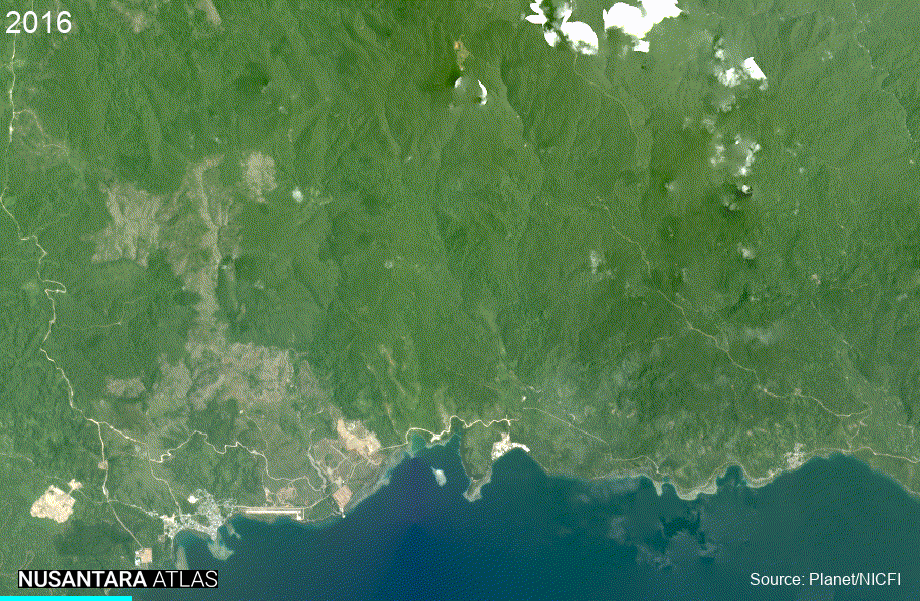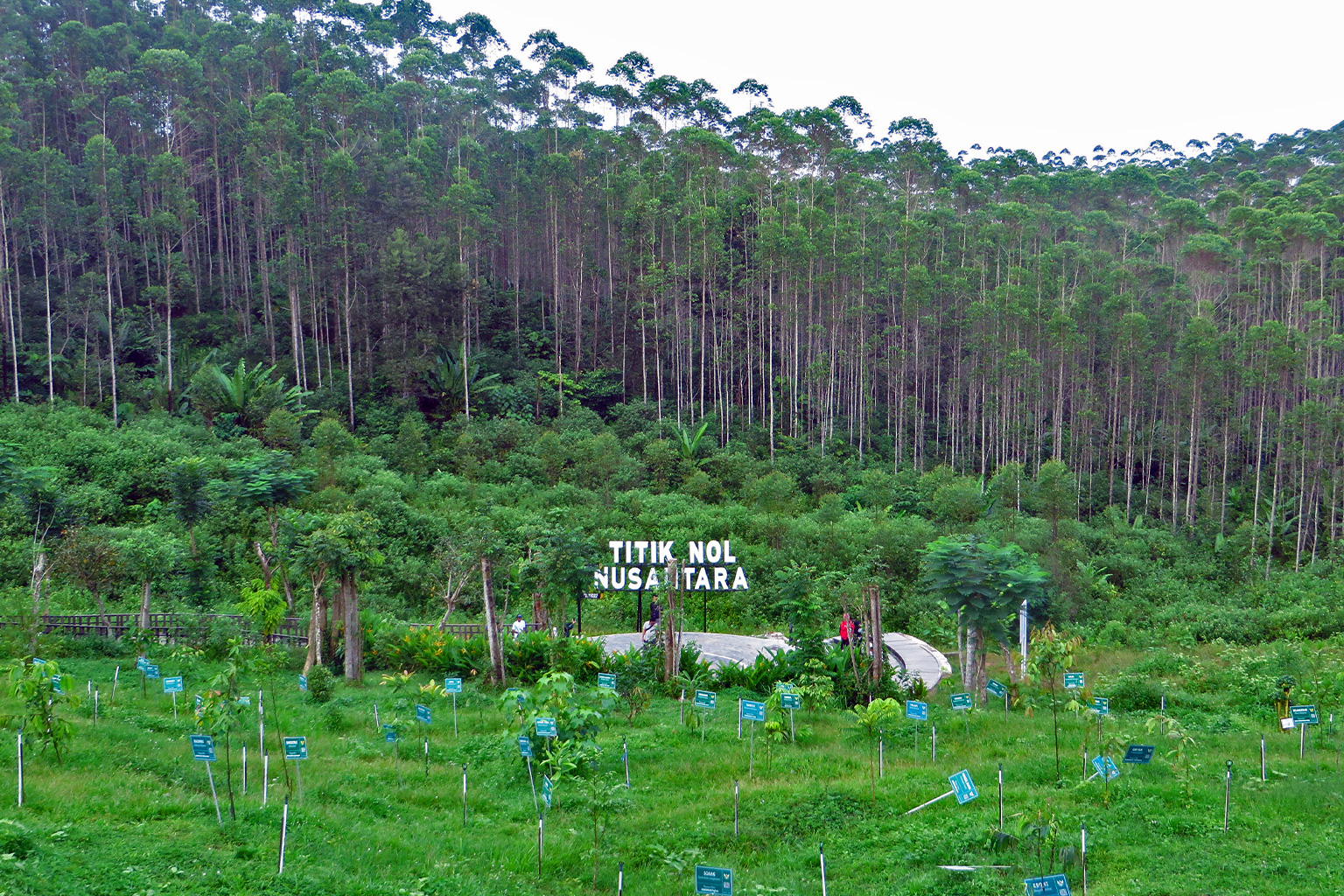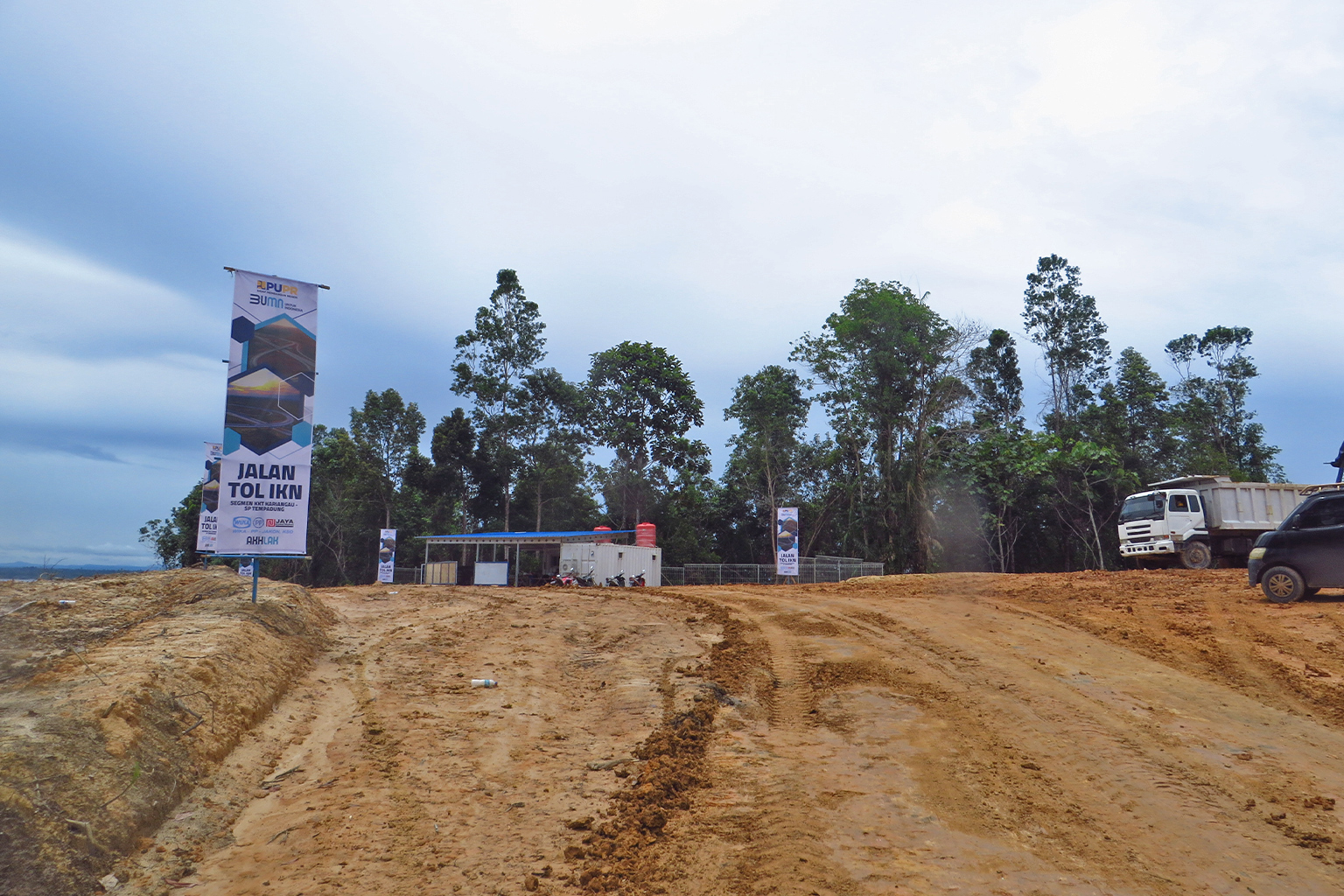- Indonesian President Joko Widodo is courting investment for a “green industrial park,” a key component in his ambitions to boost Indonesia’s economy by making the country a global hub for the production of electric vehicles.
- Indonesia holds the world’s largest reserves of nickel, a key component in EV batteries, making the country an attractive destination for EV investors.
- However, experts have raised concerns about the environmental impacts of nickel mining and industrial development, which can negate any environmental benefits of EVs.
Since proclaiming independence in 1945, Indonesia’s leaders have not been shy about their ambitions to transform the county into an economic powerhouse. For decades, economic plans relied heavily on extracting resources like timber, coal and gas. Now, though, President Joko Widodo is embracing a plan to ride the wave of the global climate agenda with projects like a “green industrial park.” The strategy plays off Indonesia’s comparative advantages, especially natural resources like nickel, land and water.
In a recent round of visits to Asia Pacific’s three economic heavyweights — China, Japan and South Korea — Widodo consistently highlighted Indonesia’s request for investment and technological support in developing its new “green” capital city as well as the aforementioned industrial park. These two mega projects, both sitting on the east coast of Kalimantan, the Indonesian portion of the island of Borneo, are now Indonesia’s flagships in its drive to become an advanced economy.
The industrial park, spanning 30,000 hectares (74,000 acres) and to be powered mainly by hydroelectricity, will be a key component in the country’s grand plan for an end-to-end electric vehicle (EV) supply chain, starting with extracting and processing nickel ore and advancing to manufacturing batteries and, eventually, EVs. Home to almost a quarter of the world’s nickel reserves, Indonesia has been actively wooing EV pioneers like Tesla to make the country a global EV production hub.
Tracking the grand plans
David Gaveau, a remote sensing expert who monitors deforestation in Indonesia, has been keeping tabs on developments in the country’s east using satellite imagery. “We are seeing clear signs of heightened industrial activity at the Weda Bay Industrial Park in Maluku and the Morowali Industrial Park in Sulawesi, driven by nickel mining,” he says. The reduction in forest cover and coastal habitats can be seen from space in the Nusantara Atlas, managed by TheTreeMap, a firm studying deforestation and fires around the world.

“The French government has indirect investments in mining in Weda Bay Nickel because it is the second[-biggest] shareholder of Eramet with 20% ownership, which raises questions about France’s pledge to protect biodiversity,” Gaveau adds.
Gaveau, who worked in Indonesia for several years, was deported in 2020 after publishing a report showing that forest fires in 2019 burned an area much larger than the government had claimed.
Since then, he’s continued monitoring land-use changes across the archipelago, including scouring satellite images of Kalimantan for evidence of the new industrial park, mega dams, and Nusantara, Indonesia’s proposed new capital city. But, so far, the park has not shown up yet. Leonard Simanjuntak, country director of Greenpeace Indonesia, concurs: “We are aware of the green industrial park and are following developments, but it is not a focus of our campaigning yet. It is still somewhat beyond the horizon.”
Nevertheless, investments have already started pouring in ahead of construction. This investment, in turn, can help pay for big-ticket infrastructure projects like hydropower dams at a time when Indonesia struggles to balance its budget, though they often come with tax breaks attached.

Environmental and social costs
These economic benefits come with real environmental costs when hydropower is chosen. Leonard notes that the mega dams are planned in the heart of pristine rainforests in North Kalimantan province, specifically on the Kayan and Mentarang rivers, potentially leading to significant biodiversity loss and the unbalancing of ecosystems in the area.
Arie Rompas, team leader for Greenpeace Southeast Asia’s forest campaign, adds: “Industrial activity such as coal mining and palm oil in East Kalimantan has already displaced the Dayak people living along the Kayan River. Furthermore, the environmental impact assessment for the planned green industrial park is being rushed and not done credibly.”
The park’s construction would also likely come with significant emissions, not just from deforestation but also from the fuel and materials used. Building Nusantara is estimated to require more than 60 million metric tons of cement, the production of which is likely to be powered by Kalimantan’s coal resources. The new industrial park will be no different, which casts doubts over its “green” credentials.
There are also particularly worrying concerns about nickel extraction in the EV supply chain. Arie points out that many nickel mines operate without permits and are active even in protected forest areas. Both emphasize that industrial developments must have strong environmental and social impact safeguards in place early on, with proper adherence to free, prior and informed consent (FPIC) principles and community development schemes.
EV companies are becoming more careful about the sustainability of their supply chains, as investors and consumers are grow increasingly environmentally conscious. For example, Tesla sources much of its nickel from Canada and Australia, where environmental safeguards are stronger. The sustainability considerations might incentivize the nickel industry in Indonesia to clean up its act if it wants to be part of the deal.
Indonesia’s Ministry of State-Owned Enterprises and the Nusantara Capital City Authority did not respond to requests for comment for this article.

Are electric vehicles the answer?
One of Greenpeace’s campaign priorities is for massive solar power generation in urban areas, especially on the islands of Java, Sumatra and Bali, which collectively account for almost 70% of total electricity demand in the country. Another priority is electric-based public transport at scale. “We don’t want to see massive traffic jams replicated from internal combustion engine vehicles to EVs,” Leonard says. “There could be an improvement in pollution but not necessarily efficiency. We should be talking about thousands of electric buses instead of millions of private cars.”
Gaveau echoes some of these concerns: “Renewables are better than fossil fuels, but only if they do not involve large-scale deforestation or seizing of Indigenous land.”
There’s much potential for a well-planned EV industry to cut emissions across the power, transport and industrial sectors in one fell swoop. But the devil is in the details, observers say. Hastily drafted environmental impact assessments, indiscriminate mining, and deforestation of Borneo’s mega diverse rainforests threaten to cancel out any emissions benefits. To be truly “green” and sustainable, Indonesia’s grand plans for the EV industry must carefully avoid these mistakes, observers say.
Justin Liew is a Research Associate at the United Nations Sustainable Development Solutions Network Asia (SDSNA), hosted in Sunway University. His main research projects are ASEAN Green Future: Accelerating decarbonization across ASEAN, and Sustainable Development for Indigenous Peoples. His research interests lie within the intersection of sustainability and economics, with a special focus on carbon markets. He graduated from Wesleyan University as a Freeman Asian Scholar, and is a member of Omicron Delta Epsilon, the international honour society for economics.
Chun Sheng Goh is a researcher at Sunway University and Harvard University. His research interests lie within the intersection of bio-economy development and environmental restoration, with a special focus on both Malaysian and Indonesian Borneo. The most recent work by Chun Sheng is a monograph co-authored with Lesley Potter, namely ‘Transforming Borneo: From Land Exploitation to Sustainable Development’, scheduled to be published in late 2022. He is also Programme Leader for Master’s in Sustainable Development Management at Sunway’s Jeffrey Sachs Center.
FEEDBACK: Use this form to send a message to the author of this post. If you want to post a public comment, you can do that at the bottom of the page.
